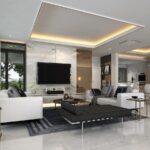Symmetry vs Asymmetry in Interior Design (Explained)
Interior design is so much more than throwing a couple of cushions around and painting the walls in your favorite color.
When done properly, interior design creates a fully-realized aesthetic of indoor space and brings balance to our homes.
The principle of balance in interior designs is something we often take for granted.
When you enter the room and automatically feel comfortable and at ease, it’s probably thanks to the work of the interior designer.
Finding the proper balance will make your home look and feel complete and organized, not to mention strikingly beautiful.
Of course, achieving harmony in the living environment depends on the layout of the room as well as on the occupant of that environment.
That’s why interior designers use different methods to make the space feel balanced.
Below, I’ll compare symmetry vs asymmetry in interior design, the two principal approaches to balancing our homes.
Table of Contents
How Is Symmetry Used In Interior Design?
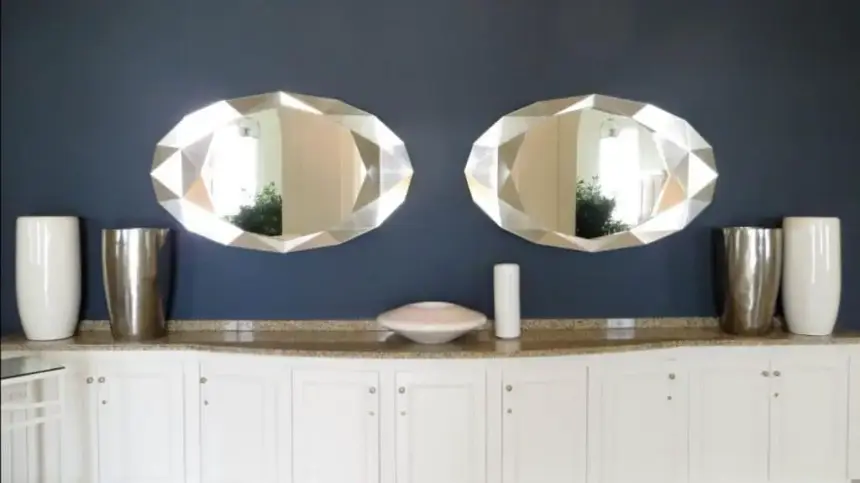
Symmetrical balance features the layout where items and colors in the room mirror each other along the central axis or are actually repeated.
It’s the most traditional form of interior design, mainly because our eyes are accustomed to symmetry.
It exists in nature and all around us, starting with our own bodies. That is why our brains easily process the symmetrical decor ideas as soon as we enter the room.
It just makes sense to us, is pleasing to the eye, and makes us feel comfortable and safe.
The symmetrical interior design also invokes a sense of dignity and stability.
This kind of room set-up can make it neat, clean, and well-decorated even when it’s overstuffed with furniture.
However, depending on our own personality, this type of balance can have some downsides.
It can sometimes be seen as unimaginative, static, and, occasionally, simply boring.
How To Achieve Symmetrical Balance In Your Home
Symmetrical balance in interior design is fairly simple and can be easy to achieve. It starts by determining the focal point of the room.
Depending on the type of the room and available furniture, this can be a fireplace, dining table, bed, kitchen island, or any other item dominating the space.
A focal point is, basically, the place that your eyes are drawn to first as you enter the room.
Once you select your focal point, take its central axis (imaginary line from that point through the length of the room) and move outwards from it.
The other design elements should mirror each other along that axis. This includes furniture, but also other objects, colors, and lighting.
This doesn’t necessarily mean that you should have two of each, but either side of your focal point should carry the same visual weight and be similar in shape.
How Is Asymmetry Used In Interior Design?
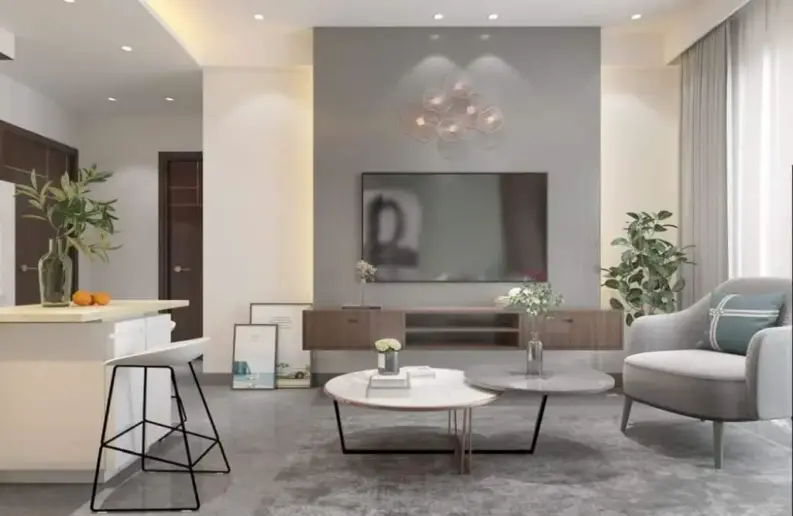
When they wish to give the room a more informal and dynamic look, interior designers use the asymmetric balance.
It’s a way of keeping design elements in your room balanced but without them mirroring each other piece by piece.
Of course, this doesn’t mean creating chaos. While they don’t mimic each other, these pieces still have to work together to create balance.
You may use different types and sizes of furniture on opposing sides of the room, but their visual weight, color, and texture need to be balanced out.
The main advantage of asymmetrical interior design is that it brings the room to life and makes it more interesting.
This is done by 3Dmodeling visually unexpected patterns which create surprise and positive tension when you walk into that living space.
Patterns that are less immediately obvious take longer to process which, in turn, makes them more compelling and challenging.
How To Achieve Asymmetrical Balance In Your Home
Similar to symmetry, creating an asymmetrical balance in your home begins by finding the focal point of the living space.
This is usually a large and unique asymmetrical element that serves as a starting point for creating a visual flow of the room.
Asymmetry doesn’t necessarily imply big and bold moves. Sometimes just pivoting a piece of furniture such as a chair at an angle can liven up the space.
When grouping items in the room, it’s best to arrange them in odd numbers to make the most of the asymmetrical design.
Still. remember to coordinate these pieces with each other.
They should have a common thread, such as repeating colors, shapes, or lines, to truly work together.
The ultimate test of how asymmetrical design works is how it makes you feel. If, by your perception, something is a bit off, do some tweaks until it feels just right.
What Is The Difference Between Symmetrical And Asymmetrical In Interior Design?
| Symmetrical Interior Design | Asymmetrical Interior Design |
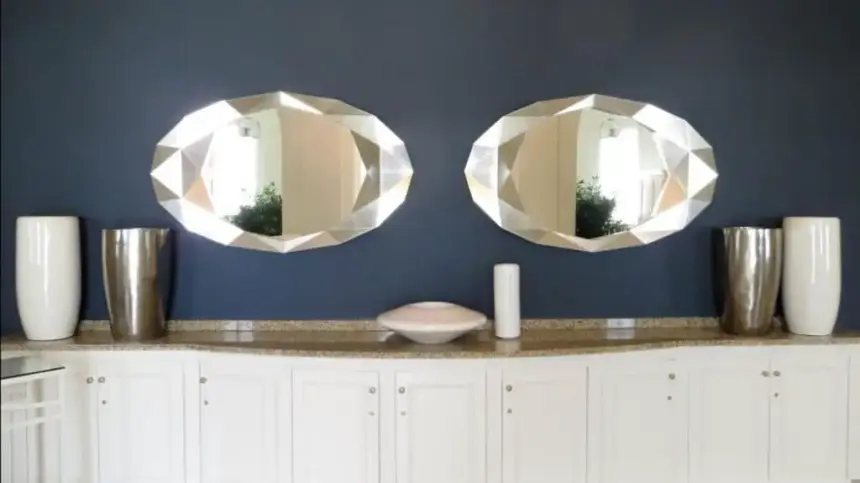 | 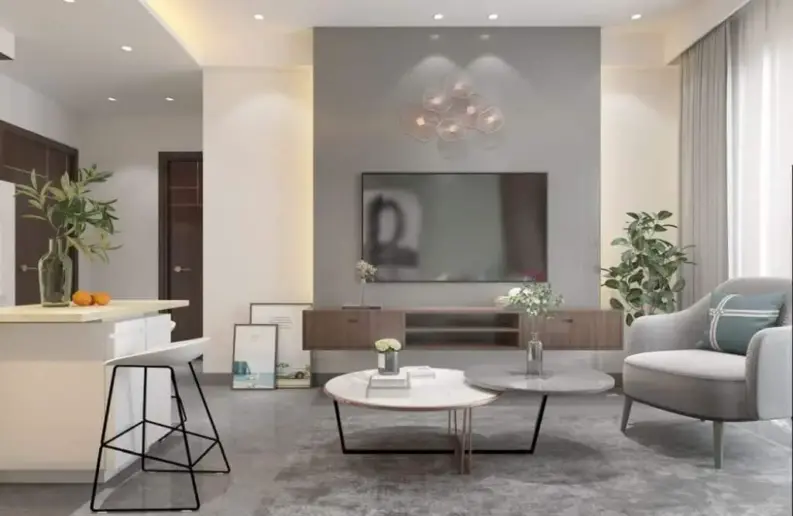 |
While symmetrical interior design provides a uniform and harmonious feel to the room, the asymmetrical approach is less formal and rigid.
The symmetrical balance in the room is initially more pleasing to the eye and invites the feeling of comfort and safety.
However, to some, it may sometimes feel a bit cold and lifeless. On the other hand, asymmetry challenges our brains more and provides a warmer and lived-in feel to the room.
The symmetrical design is cleaner and more simple compared to using asymmetry which is more complex and requires walking on a thin line of striking the right balance.
Because of this interior symmetry is easier to achieve and mainly involves following the established patterns. proper asymmetrical balance is more difficult to pull off and requires an “eye for design.”
However, it leaves room for more creativity and freedom in designing how the room will look.
Conclusion
The debate on symmetry vs asymmetry in interior design is ongoing and each side has its arguments.
However, the main idea of interior design should be to make someone feel good in the room and both approaches can deliver just that.
It’s the individual preferences and the layout of certain spaces that make the real difference between the two.
Some people enjoy the simplicity and elegance of the symmetrical interior design.
Others like a bit of flair in their living space and thrive in the more casual and informal look that asymmetry brings.
The key is that you feel comfortable in your surroundings and enjoy whatever design style you’ve chosen.











